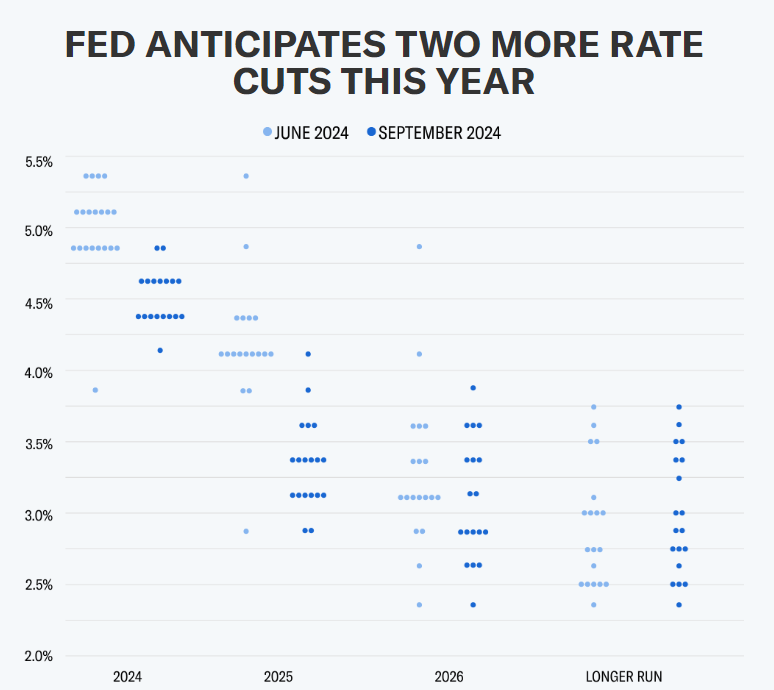What to trade in the Rate Cut Cycle?
Last week, the Federal Reserve opened a new rate-cutting cycle with an "unconventional" 50 basis points, marking the official end of tightening since early 2022.The background and implications of this decision are worth exploring in depth. $S&P 500(.SPX)$
Extent and path of the rate cut
The Federal Reserve's 50 basis point rate cut is intended to be a quick response to potential economic growth pressures. $Cboe Volatility Index(VIX)$
Although the market is generally positive about the rate cut, but there are also concerns about recession.Powell emphasized in this context, there is no obvious signs of recession, and the future path of interest rate cuts will be more gentle.
According to the Fed's "dot plot", there may be 50 basis points of rate cuts during the year, and the overall rate cut cycle is expected to reach 200 basis points by 2026.This is a marked difference from the CME futures market's expectation of 75 bps for the year and another 200 bps in 2025, which appears to be more aggressive.
Key impact areas
Residential sector: Expectations of interest rate cuts have led to a significant fall in financing costs, with 30-year mortgage rates having fallen to around 6.1%, which is below the current rental return of 6.8%.This means that the credit structure for residents has turned loose and demand for home purchases is expected to rise. $Real Estate Select Sector SPDR Fund(XLRE)$
Corporate sector: Financing costs for large corporations are no longer restrictive, and financing constraints for small and medium-sized enterprises (SMEs) have been significantly eased.Both high yield grade and investment grade credit spreads have fallen back to historical lows, reflecting the improved corporate financing environment. $Industrial Select Sector SPDR Fund(XLI)$ $Financial Select Sector SPDR Fund(XLF)$
Overall economy: The gap between real and natural interest rates has narrowed to below 70 basis points, suggesting that monetary policy has loosened its hold on the economy.Financial conditions have also reached their easiest level since 2022, supporting the recovery.
Takeaways and Outlook
The current cycle of interest rate cuts is likely to produce results sooner than historical experience, mainly because the return on investment in the economy has risen significantly.
As financing costs fall further, stock demand will be stimulated.For example, if the interest rate on 30-year mortgages can be lowered to 5%, it will likely stimulate more homeowners to sell their properties, thus improving supply and demand. $US30Y(US30Y.BOND)$
From an asset allocation perspective, the current market environment should focus on assets that benefit from rate cuts, such as short-term bonds, real estate chains and industrial metals.
Historical experience shows that in the early stage of interest rate cuts, the denominator assets (such as U.S. bonds, gold $SPDR Gold Shares(GLD)$ ) perform better, and with the gradual emergence of the effects of easing, the molecular assets (such as copper, U.S. stocks) will begin to outperform the market.Therefore, in terms of investment strategy, it is recommended that investors take the "opposite thinking, opposite doing" strategy to adapt to the current market changes. $Copper - main 2412(HGmain)$ $Invesco QQQ(QQQ)$
Disclaimer: Investing carries risk. This is not financial advice. The above content should not be regarded as an offer, recommendation, or solicitation on acquiring or disposing of any financial products, any associated discussions, comments, or posts by author or other users should not be considered as such either. It is solely for general information purpose only, which does not consider your own investment objectives, financial situations or needs. TTM assumes no responsibility or warranty for the accuracy and completeness of the information, investors should do their own research and may seek professional advice before investing.


